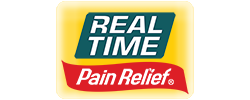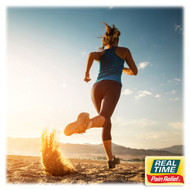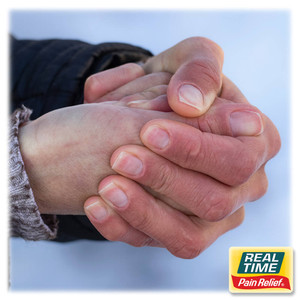7 Tips for Running in Hot Weather
27th Jul 2022
Even if you are a beginning runner or an experienced ultra-marathoner, you are probably aware of the risks that come with running in hot weather. However, many runners torture their bodies during the blazing days of summer because they do not know about the increased dangers or how to prepare for them. Safety is one of the biggest keys for runners’ success, and preparing for all types of weather is one way to be safe. Here we look at the top things you want to remember for running in the hot, summer climate.
Hydration
How’s your water intake? If you’re a seasoned runner, it may seem like a no-brainer that your body should stay optimally hydrated. However, dehydration is the number one risk when it comes to running in hot weather. You’re already releasing large amounts of heat from your body, and the added heat is going to require more than your average intake of water. You may start out fully hydrated, but after only a few minutes of running in the heat, your body feels like a tea-kettle whistling. This is why it is important to replenish these fluids during your run. We’re not saying that you should run with 12 water bottles strapped around your waist (well…that’s up to you), but hydrating while you run will prevent you from experiencing dehydration. If you are running longer than 15 minutes on a hot day, bring some water. Most would agree that around 5-8 oz every 10-15 minutes is ideal for staying hydrated. If holding a water bottle in your hands sounds annoying, look around and try to find a hands free water bottle carrier, or purchase a camelback. This way you can take water with you and stay hydrated without lugging around a bulky bottle.
Check the Temperature
If you're planning to step outside for a quick run, and the temperature is over 90F, take the time to consider if your body is ready for that kind of treatment. Blazing hot days are not ideal for long runs. Ask yourself if an indoor run would be just as good and save yourself some torture. You can also plan a shorter route/run, just to save your body some pain later. Make sure that you're actually checking the temperature and resist coming to conclusions by stepping outside for a few seconds to “get a feel” of the temperature. This will not give you an accurate description of what it will feel like when you start running. Your body temperature increases significantly during exercise and can make the weather feel twice as hot than it actually is.
Check Humidity Levels
It probably goes without saying, but humidity also plays a factor when running in hotter weather. The higher the humidity, the more fluids you will lose by sweating. Shortening your distance and lowering your pace will help you out, and remember to keep yourself adequately hydrated. You’re going to be losing a lot more water from your system on days with high humidity levels. Prepare accordingly. You may even want to prepare in advance. So check out the week’s forecasted temperature and humidity levels to see what you’re up against that week. A little preparation and planning time can go a long way since there are elevated risks that come with running in extreme temperatures. For instance, you can plan ahead and schedule your long run for a day with lower humidity levels.
Consider the Time of Day
It might sound like the start of a bad joke, but one of the first things you want to ask yourself before you go for a run is “How hot IS it?” Is it your average summer day, or is it a real scorcher out there? During those scorchers, you’re going to want to plan your run accordingly. If it’s going to be in the triple digits in the afternoon, try to plan a morning run when the temperature is significantly lower. Or if it is hottest around noon, and you’re just simply NOT a morning runner, plan to run later in the afternoon. There’s no reason to put yourself out there during the hottest part of the day.
Lower Your Pace
It’s summer. It’s hot. We all know it. Is today really the day you need to push yourself to the max? Consider lowering your pace on scorching hot days and taking it a little easier. After all, running is supposed to be enjoyable. Take the time to notice more on your route than you normally would. Take the scenery in and just enjoy yourself. Remember, your body is working extra hard during hot days, so it’s ok to give it a little more rest.
Shorten Your Distance
Just as lowering your pace will be easier on your body, so will shortening your distance. Maybe you could plan a shorter route according to the temperature outside. Unless you're training for a marathon that is also during the hottest parts of summer, there’s no reason to add distance to your run, or even cover the same amount of ground that you normally do. Again, give your body a break from these blazing hot days, and thank yourself for it.
Lightweight Clothing
Summer is the time to wear your most lightweight, thin, and breathable running gear. Shorts that are made from thinner materials and provide plenty of room for heat to escape are ideal. The same goes for your shirt or jersey. Something lightweight, like a thin cotton shirt, is what you’re going for. Clothing shouldn’t be so tight that it prevents heat from escaping properly. Your summer running shoes may need to weigh a little less and allow more airflow to provide comfort and coolness. If you’re just starting out as a runner, you’re going to want to plan for these hotter seasons and know that running gear is an ever-changing part of the hobby. So hit the stores early to find better deals on summer running clothes.
Pain Relief You Can Trust® Since 1998
For over 20 years, families across the U.S. have turned to Real Time’s lotions and creams for PAIN RELIEF YOU CAN TRUST®. From Lifestyle Essentials, through our Nujuvena line, to Pain Relief Formulas, Real Time has you covered. LEARN MORE





